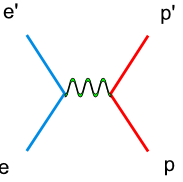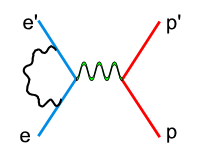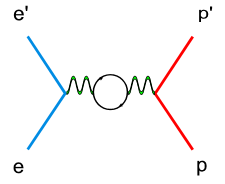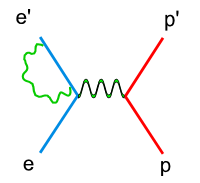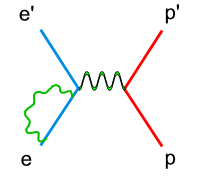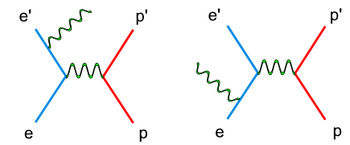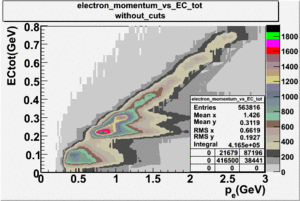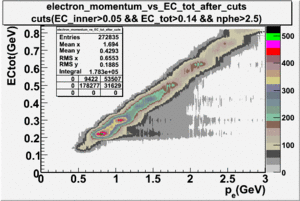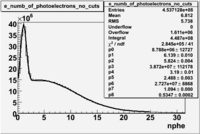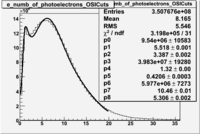Tamar AnalysisChapt
Introduction
THIS CHAPTER IS NOT READY< PLEASE READ OTHER THREE CHAPTERS.
This chapter will describe the techniques to calculate semi inclusive double spin asymmetries for the following reactions and for NH3 and ND3 polarized targets respectively. The goal of this work is the extraction of the ratio of polarized to unpolarized quark distribution functions using double spin asymmetries.
There are couple of main steps in the data analysis, which will be discussed bellow: 1) the data selection, 2) background elimination, 3) the target and beam polarization, 4) the detector acceptance >???????
Radiative Corrections
Analysis chapter is not ready, Please start reading Experimental setup, theory and CEBAF. Those are the chapters that i finished, and would like them corrected. Ill rewrite the chapter below, it is not argent and include the diagrams.
In double spin asymmetry analysis the electron nucleon scattering process is given as an one photon exchange event, so called the Born approximation. In reality, there are multiple photon effects during the experiments. These high order processes, also called radiative effects, can be calculated and used to correct the cross section data.
There are two types of radiative corrections, internal and external. Internal radiative corrections describe the contributions which took place during the lepton-hadron interaction. In first order approximation they include vertex photon exchange, self energy and vacuum polarization.
On the other hand, the external radiative corrections account for the Bremsstrahlung by the incoming and scattered electron and by the recoiling target nucleon.
For the ~5.6 GeV incident electron beam data the radiative corrections are less than 5%<ref>http://www.jlab.org/Hall-B/secure/eg1/EG2000/fersch/QUALITY_CHECKS/file_quality/runinfo.txt</ref>. Due to negligible contributions from the radiative corrections they are not included in the double spin asymmetry analysis.
EC CUTS
During the EG1b experiment, the electromagnetic calorimeter was used to separate electrons from the pions. The energy deposition into the electromagnetic calorimeter is different for electrons and pions.
Electrons interact with the matter , producing electromagnetic showers and releasing the energy into the matter. The deposited energy into matter is linearly proportional to the momentum of the electrons. On the other hand , pions are minimum ionizing particles(MIP). Traveling through the matter, pions deposit approximately 0.08 GeV energy independent of their momentum.
- Electron Momentum vs EC_total
NPHE CUTS
the misidentified electrons were excluded requiring a signal in the threshold CLAS Cherenkov detector. Pion's misidentified as electrons have been shown to produce around ~1.5 photoelectons in the cherenkov detector, as shown below. Geometrical cuts on the location of the particle at the entrance to the cerenkov detector were applied to reduce the pion contamination. The second histogram below shows that after cuts the peak around 1.5 is substantially reduced.
| No cuts | OSI Cuts |
Notes
<references/>
[Go Back]
